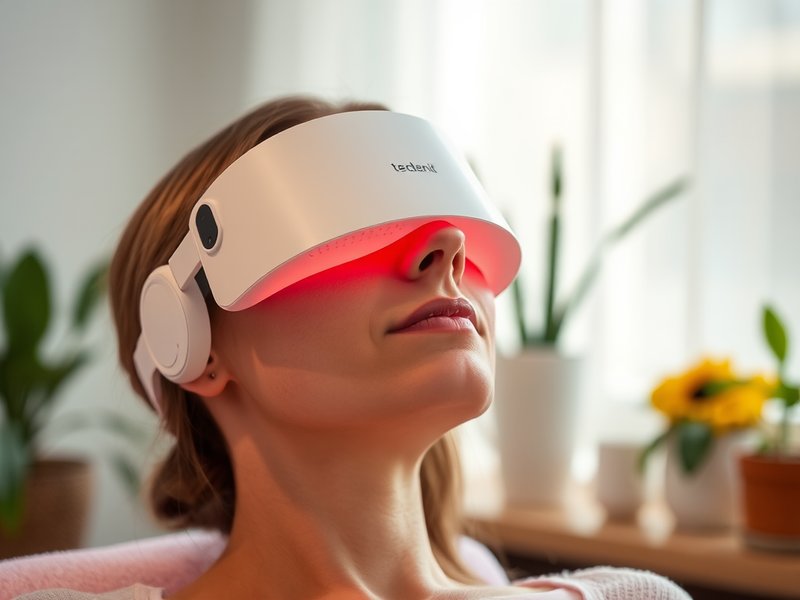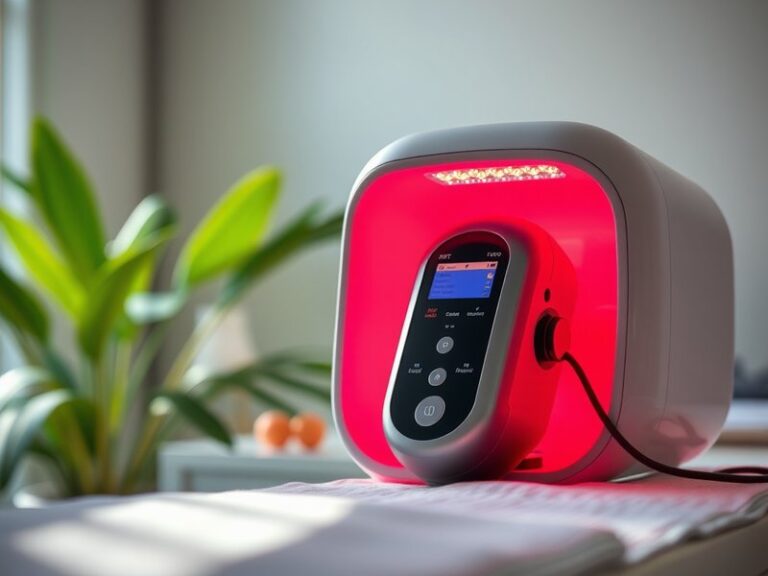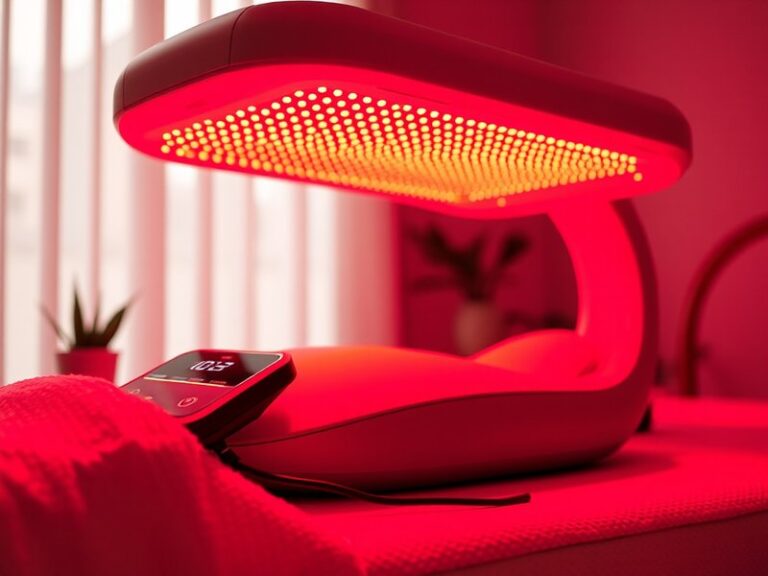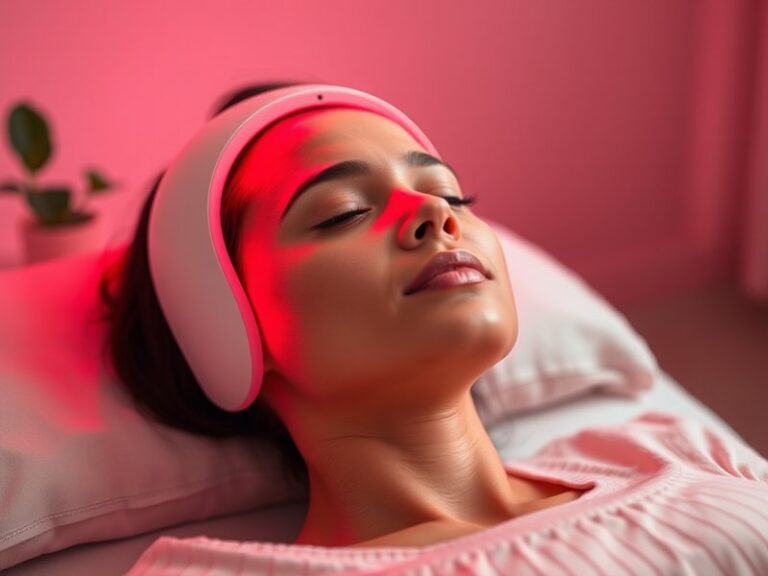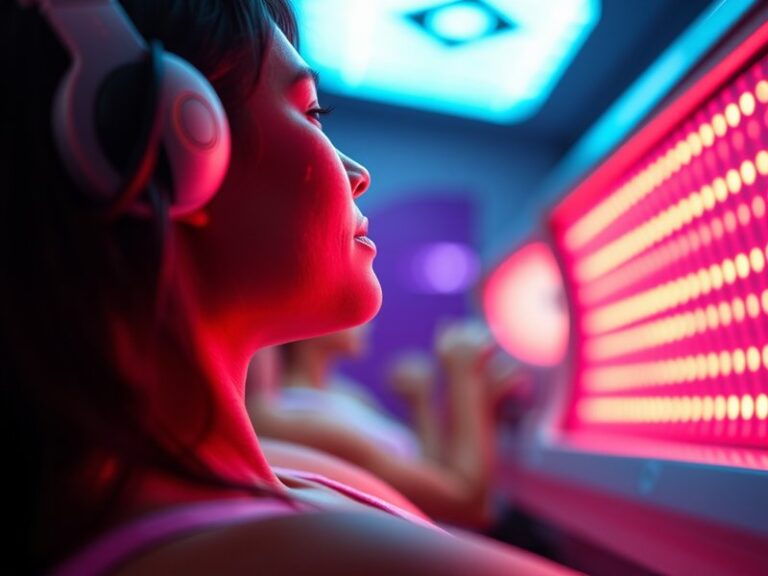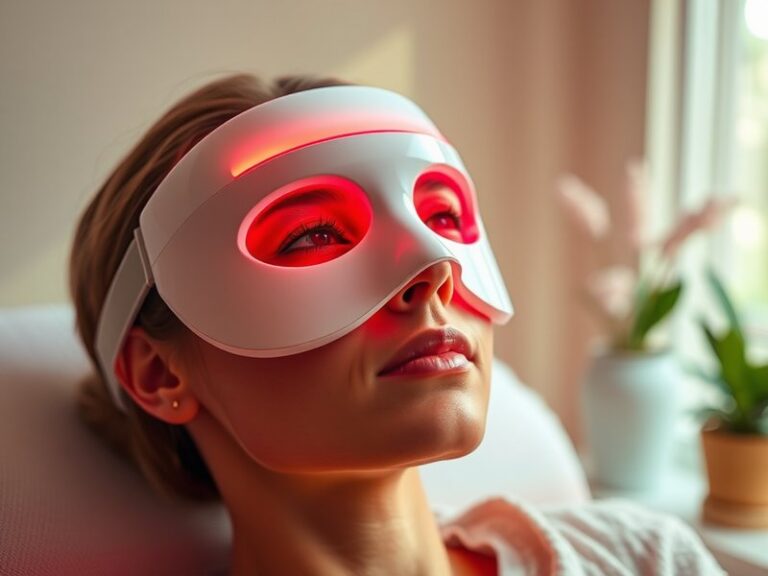What Do Red Light Therapy Masks Do?
What Do Red Light Therapy Masks Do?
Are you curious about the buzz surrounding red light therapy masks and their benefits for skin health?
This article will explore the science behind red light therapy masks, their potential benefits, what to consider before using them, and alternative treatments. By the end, you’ll have a clearer understanding of whether these devices are right for you.
Key Takeaways
- Red light therapy masks use specific wavelengths of light to stimulate cellular processes in the skin.
- Benefits may include improved skin texture, reduced redness, and enhanced collagen production.
- Alternatives such as chemical peels and microdermabrasion might be considered depending on individual skin needs.
What is Red Light Therapy?
Red light therapy (RLT) is a non-invasive skincare treatment that utilizes low-wavelength red light to penetrate the skin. It is believed to promote healing and regeneration at the cellular level. This therapy has roots in medical practices, originally used to accelerate wound healing and reduce inflammation.
Using red light therapy masks at home has gained popularity due to their convenience and ease of use. These masks typically emit light in the 600 to 650 nanometer range, targeting skin cells to stimulate collagen production, promote circulation, and enhance the overall appearance of the skin.
How Does It Work?
Red light therapy works by stimulating the mitochondria in cells, which enhances energy production and accelerates the body’s natural healing processes. The process may help skin to appear more youthful and vibrant by improving cell turnover and repairing damaged tissues.
What are the Benefits of Red Light Therapy Masks?
Red light therapy masks offer various advantages for those seeking a more radiant complexion. Below are some of the key benefits:
Enhanced Collagen Production
Collagen is a protein essential for maintaining skin elasticity and firmness. Research indicates that red light therapy can significantly increase collagen synthesis, helping to reduce the appearance of fine lines and wrinkles.
Reduction in Inflammation and Redness
Those with sensitive or acne-prone skin may find relief with red light therapy. The treatment helps to decrease inflammation, resulting in a more even skin tone and reduced redness that often accompanies conditions like rosacea or breakouts.
Improved Skin Texture and Tone
Users often report a smoother skin texture after regular RLT sessions. The therapy can enhance blood circulation, promoting a healthy glow and improving the overall appearance of dull or uneven skin.
Additional Benefits
- Healed Sun Damage: Red light may aid in repairing damage from UV exposure.
- Acne Reduction: Studies suggest RLT can help kill acne-causing bacteria.
- Improved Wound Healing: Speed up the recovery of minor cuts and blemishes.
Is it Possible to Use Red Light Therapy Masks Effectively?
Using red light therapy masks can be effective if done correctly. However, it’s essential to follow guidelines for usage duration and frequency to maximize benefits and minimize risks.
What are the Advantages of Using a Red Light Therapy Mask?
- Convenience: Masks are designed for easy at-home use, allowing flexible treatment times.
- Non-Invasive: Red light therapy masks offer a pain-free alternative to more invasive skincare treatments.
- Cost-Effective: Compared to regular spa treatments, home use masks can be more budget-friendly in the long run.
What are the Disadvantages of Using a Red Light Therapy Mask?
- Time-Consuming: Users may need to dedicate time for daily sessions to see results.
- Variable Results: Not everyone will experience the same benefits, and some may find limited effectiveness.
- Initial Costs: High-quality masks can be an investment, especially for those on a tight budget.
What are the Things to Consider Before Using a Red Light Therapy Mask?
Before starting red light therapy, consider the following factors to ensure safe and effective use:
Skin Type and Conditions
Individuals should assess their skin type (e.g., oily, dry, sensitive) and any existing skin conditions to determine if red light therapy is suitable for them or if they should consult with a dermatologist first.
Treatment Duration and Frequency
Following manufacturer guidelines is crucial for ensuring effectiveness while avoiding potential overuse. Most masks recommend sessions ranging from 10 to 30 minutes a few times a week.
Allergic Reactions or Sensitivities
Before beginning treatment, it’s important to test for any allergic reactions to the device or light, especially in individuals with light-sensitive skin or conditions.
Additional Considerations
- Budget: Ensure you understand the financial commitment before purchasing.
- Follow-Up Treatments: Some users may need complementary skincare products or treatments for desired effects.
- Device Certification: Look for FDA-cleared devices to ensure safety.
What are the Alternatives to Red Light Therapy Masks?
If red light therapy doesn’t seem like the right fit for you, consider these alternative skincare treatments:
Chemical Peels
Chemical peels use acid solutions to remove the outer layer of dead skin, promoting cell regeneration and improving texture and tone. This method can address deep wrinkles, sun damage, and acne scars.
Get the full context in Can You Sunbathe After Red Light Therapy?
Microdermabrasion
A non-invasive exfoliation technique, microdermabrasion uses tiny crystals to remove dead skin cells and reveal smoother skin underneath. It’s suitable for various skin types and can enhance the effectiveness of at-home skincare products.
LED Light Therapy
Similar to red light therapy, LED light therapy employs different wavelengths of light, including blue and green, to address specific concerns such as acne or pigmentation issues.
Additional Alternatives
- Facial Masks: Clay or hydrating masks can offer surface-level benefits for the skin.
- Skincare Products: High-quality serums and creams can promote hydration and repair without devices.
- Professional Treatments: Consultations with dermatologists can yield tailored solutions.
Conclusion: Is it Recommended to Use Red Light Therapy Masks?
Red light therapy masks present a convenient, non-invasive option for those looking to improve their skin’s appearance. With benefits including enhanced collagen production, decreased inflammation, and improved skin texture, many may find RLT useful as part of their skincare regimen. However, individual results can vary, and it’s essential to consider personal skin needs and consult a professional if necessary before incorporating this treatment into your routine.
Frequently Asked Questions
What should I expect during a red light therapy session?
Most users experience a gentle warmth during treatment without pain or discomfort, making it an easy addition to your skincare routine.
Can anyone use a red light therapy mask?
While generally safe for most individuals, those with specific skin conditions, sensitivities, or eye issues should consult a dermatologist before use.
How long does it take to see results?
Results can vary; some users notice improvements in a few weeks, while others may need several months of consistent use to see significant changes.
Is red light therapy safe to use every day?
While many masks are safe for daily use, it’s advisable to follow the manufacturer’s instructions and not to exceed recommended session times.
Explore further in Can Red Light Therapy be used with Vitamin C Serum?
Are red light therapy masks FDA-approved?
Many masks are FDA-cleared, but it’s essential to verify the device’s certification to ensure safety and efficacy.
